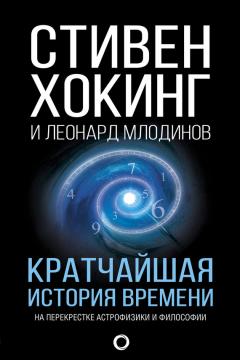Ознакомительная версия.
193
Фидо (1941–1958, от лат. преданный) — уличная собака; завоевала международную любовь своей абсолютной преданностью мертвому хозяину, обжигателю кирпича итальянцу Карло Сориани, погибшему в 1943 г. Пятнадцать лет после смерти спасшего его когда-то Сориани пес каждый день приходил на автобусную остановку ждать хозяина и умер на этой же остановке. — Прим. перев.
Jonathan J. Cooper et al., «Clever hounds: Social cognition in the domestic dog (Canis familiaris)», Applied Animal Behavioral Science (2003), pp. 229–244; A. Whiten and R.W. Byrne, «Tactical deception in primates», Behavioral and Brain Sciences 11 (2004), pp. 233–273.
Brian Hare, «The domestication of cognition in dogs»; E.B. Ginsburg and L. Hiestand, «Humanity’s best friend: the origins of our inevitable bond with dogs» in: H. Davis, D. Balfour, eds., The Inevitable Bond: Examining Scientists-Animal Interactions (Cambridge: Cambridge University Press, 1991), pp. 93-108.
…
L.H. Ingraham and G.M. Harrington, «Psychology of the scientist: XVI. Experience of E as a variable in reducing experimenter bias», Psychological Reports 19 (1966), pp. 455–461.
Роберт Розентал (р. 1933) — американский психолог немецкого происхождения, заслуженный профессор психологии Университета Калифорнии; известен исследованиями самореализующихся пророчеств, и том числе так называемого «эффекта Пигмалиона» — исполнения ожиданий педагога по отношению к ученику. — Прим. перев.
Robert Rosenthal and Kermit L. Fode, «Psychology of the scientist: V. Three experiments in experimenter bias», Psychological Reports 12 (April 1963), pp.491–511.
Robert Rosenthal and Lenore Jacobson, Pygmalion in the Classroom: Teacher Expectation and Pupils’ Intellectual Development, p. 29.
Robert Rosenthal and Lenore Jacobson, Pygmalion in the Classroom: Teacher Expectation and Pupils’ Intellectual Development, p. 29.
…
Simon E. Fischer and Gary F. Marcus, «The eloquent ape: Genes, brains and the evolution of language», Nature: Reviews Genetics 7 (January 2006), pp. 9-20.
L.A. Pelitto and P.F. Marentette, «Babbling in the manual mode: Evidence for the ontology of language», Science 251 (1991), pp. 1493–1496; S. Goldin-Meadow and C. Mylander, «Spontaneous sign systems created by deaf children in two cultures», Nature 391 (1998), pp, 279–281.
Charles Darwin, The Autobiography of Charles Darwin (1887, repr. New York: W.W. Norton, 1969), p. 141 [рус. изд.: Чарлз Дарвин. Воспоминания о развитии моего ума и характера, в: Ч. Дарвин. Сочинения, т.9, стр. 166–242, М.: Изд-во ЛН СССР, 1959. — Прим. перев.]; см. также Paul Ekman, «Introduction» in: Emotions Inside Out: 130 Years After Darwin's the Expression of the Emotions in Animals and Man (New York: Annals of the N.Y. Academy of Science, 2003), pp. 1–6.
Последнее рус. изд.: СПб.: «Питер», 2001. — Прим. перев.
…
Peter О. Gray, Psychology (New York: Worth, 2007), pp. 74–75.
Гийом Бенжамен Аман Дюшенн де Булонь (1806–1875) — французский невролог, внесший большой вклад в развитие электрофизиологии, клинической фотографии, биопсии глубоких тканей. — Прим. перев.
Antonio Damasio, Descartes' Error (New York: Putnam, 1994), pp. 141–142.
…
…
…
James A. Russell, «Is there universal recognition of emotion from facial expression? A review of the cross-cultural studies», Psychological Bulletin 115, no. 1 (1994), pp. 102–141.
Пол Экман (p. 1934) — выдающийся американский психолог, профессор Калифорнийского университета в Сан-Франциско, крупнейший специалист в области психологии эмоций, межличностного общения, психологии и распознавания лжи. Профессор Экман известен во всем мире и как вдохновитель и консультант популярного телесериала «Обмани меня» (Lie to Me, 2009–2011), и как прототип его главного героя доктора Лайтмена. В 2009 г. журнал «Тайм» включил Пола Экмана в список 100 наиболее влиятельных людей мира. — Прим. перев.
См. послесловие Экмана к изданию книги Чарлза Дарвина The Expression of the Emotions in Man and Animals (Oxford: Oxford University Press, 1998), pp. 363–393.
«Остров Гиллигана» (Gilligan’s Island,1964–1967) — американский комедийный телесериал, созданный продюсером Шервудом Шварцем. — Прим. перев.
…
…
Edward Z. Tronick, «Emotions and emotional communication in infants», American Psychologist 44, no. 2 (February 1989), pp. 112–119.
Dario Galati et al., «Voluntary facial expression of emotion: Comparing congenitally blind with normally sighted encoders», Journal of Personality and Social Psychology 73, no. 6 (1997), pp. 1363–1379.
Gary Alan Fine et al., «Couple tie-signs and interpersonal threat: A field experiment», A Social Psychology Quarterly 47, no. 3 (1984), pp. 282–286.
Gary Alan Fine et al., «Couple tie-signs and interpersonal threat: A field experiment», A Social Psychology Quarterly 47, no. 3 (1984), pp. 282–286.
…
Allan Mazur et al., «Physiological aspects of communication via mutual gaze», American Journal of Sociology 86, no. 1 (1980), pp. 50–74.
John F. Dovidio and Steve L. Ellyson, «Decoding visual dominance: Attributions of power based on relative percentages of looking while speaking and looking while listening», Social Psychology Quarterly 45, no. 2 (1982), pp. 106–113.
…
…
John F. Dovidio et al., «The relationship of social power to visual displays of dominance between men and women», Journal of Personality and Social Psychology 54, no. 2 (1988), pp. 233–242.
S. Duncan and D.W. Fiske, Face-to-face Interaction: Research, Methods, and Theory (Hillsdale: Erlbaum, 1977); N. Capella, «Controlling the floor in conversation» in: A.W. Siegman and S. Feldstein, eds., Multichannel Integrations of Nonverbal Behavior (Hillsdale: Erlbaum, 1985), pp. 69-103.
A. Atkinson et al, «Emotion perception from dynamic and static body expressions in point-light and full-light displays», Perception 33 (2004), pp. 717–746; «Perception of emotion from dynamic point-light displays represented in dance», Perception 25 (1996), pp. 727–738; James K. Cutting and Lynn T. Kozlowski, «Recognizing friends by their walk: Gait perception without familiarity cues», Bulletin of the Psychonomic Society 9, no. 5 (1977), pp. 353–356; James E. Cutting and Lynn T. Kozlowski, «Recognizing the sex of a walker from a dynamic point-light display», Perception and Psychophysics 21, no. 6 (1977), pp. 575–580.
S.H Spence, «The relationship between social-cognitive skills and peer sociomeiric status», British Journal of Developmental Psychology, 5 (1987), pp. 347–356.
…
…
A. Mehrabian and M. Williams, «Nonverbal concomitants of perceived and intended persuasiveness», Journal of Personality and Social Psychology 13, no. 1 (1969), pp. 37–58.
…
…
Цитата из эссе «В защиту геральдики», сборник «Подзащитный» (1901). — Прим. перев.
Трупиал — небольшая птица семейства воробьиных, распространена в Новом Свете. Для трупиаловых характерен гнездовой паразитизм — подбрасывание своих яиц в гнезда других птиц. — Прим. перев.
Grace Freed-Brown and David J. White, «Acoustic mate copying: Female cowbirds attend to other females vocalizations to modify their song preferences», Proceedings of the Royal Society В 276 (2009), pp. 3319–3325.
Grace Freed-Brown and David J. White, «Acoustic mate copying: Female cowbirds attend to other females vocalizations to modify their song preferences», Proceedings of the Royal Society В 276 (2009), pp. 3319–3325.
Клиффорд Нэсс (р. 1958) — профессор Стэндфордского университета, специалист в области массовых коммуникаций, один из создателей теории медийного приравнивания — очеловечивания людьми виртуальных пространств и гаджетов. — Прим. перев.
С. Nass et al., «Computers are social actors», Proceeding of the ACM CHI 94 Human Factors in Computing Systems Conference (Reading: Association for Computing Machinery Press, 1994), p. 72–77; C. Nass el al., «Are computers gender neutral?», Journal of Applied Social Psychology 27, no. 10 (1997), pp. 864–876; G. Nass and K.M. Lee, «Does computer-generated speech manifest personality? An experimental test of similarity-attraction», CHI Letters 2, no. 1 (April 2000), pp. 329–336.
Разговаривая с кем-нибудь, мы, конечно же, реагируем на содержание того, что нам сообщают. Но мы также реагируем — и сознательно, и неосознанно — на невербальные особенности говорящего. Удалив персону говорящего из коммуникации, Нэсс и его коллеги сосредоточились на автоматических реакциях подопечных на один лишь человеческий голос. Но не исключено, что испытуемые реагировали не на голос, а на физический ящик, на машину. Логически определить, на что же они реагировали, невозможно: обе реакции неадекватны. Поэтому исследователи поставили другой эксперимент, где вообще все перемешали. Некоторым студентам поручили заполнить опросники на других машинах, но с тем же голосом, какой был у их «наставника». Другие заполняли оценочную форму на той же машине, но на этой стадии у нее изменили голос. Полученные результаты показали, что студенты действительно во всех случаях реагировали на голос, а не на физический компьютер.
Ознакомительная версия.



